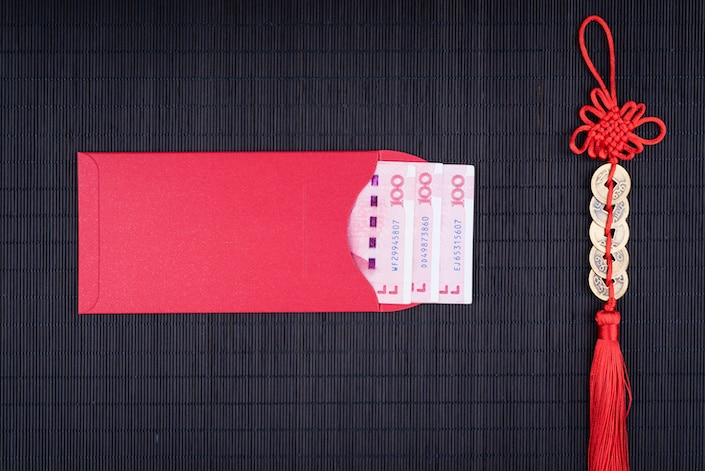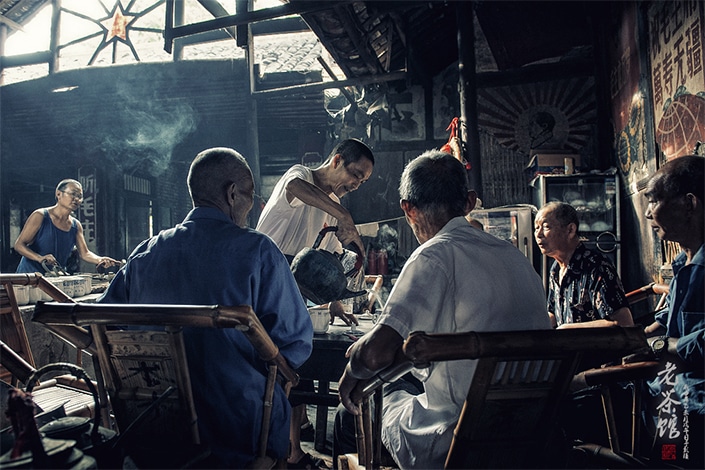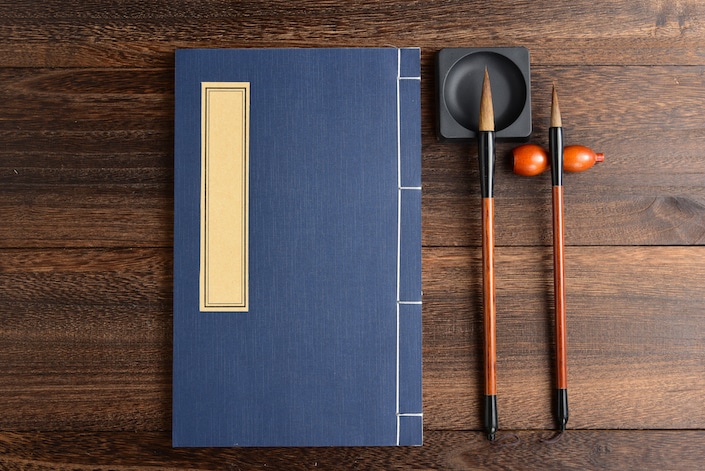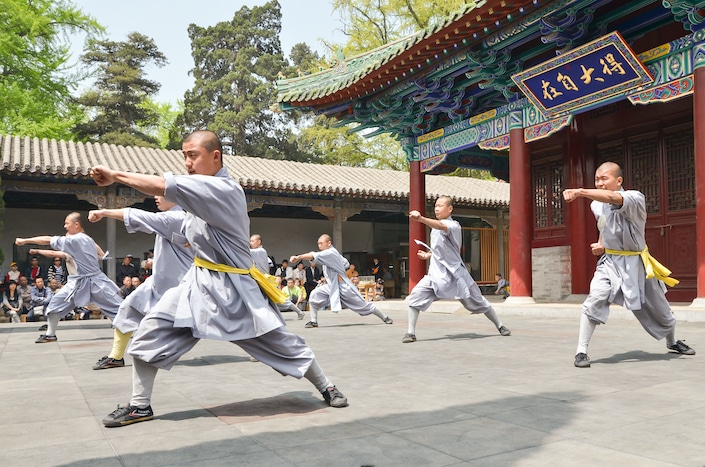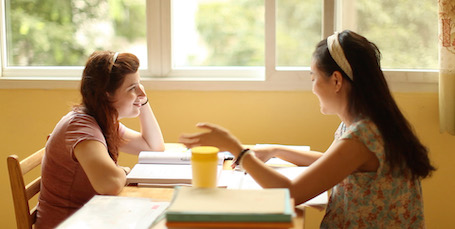Chinese Table Manners: The Ultimate Guide
Learn Chinese in China or on Zoom and gain fluency in Chinese!
Join CLI and learn Chinese with your personal team of Mandarin teachers online or in person at the CLI Center in Guilin, China.
You might be a master of western dining etiquette, but proper Chinese table manners require a new set of specialized skills and knowledge.
Read on to find out how to consume your next Chinese meal with style and grace!

Practicing Chinese table manners will enhance your dining experience, show respect for Chinese culture, and help ingratiate you with your hosts.
Table of Contents
Chinese table manners: A different way to eat
Have you ever been invited to a traditional Chinese meal? If so, you’re probably familiar with the feeling of desperately trying to figure out the proper way to eat it.
Chinese table manners take some getting used to, but learning them is essential since meals are a very important part of social and work life both in China and among members of the Chinese diaspora.
Still feeling stuck between a rock and a chopstick when it comes to Chinese etiquette? Have no fear, gentle reader, CLI is here to guide you down the winding path of Chinese table manners, so that you can get down to doing what really counts: chowing down on some delicious Chinese food!

Seating, teatime, utensil faux pas—it’s all here, so brew a nice pot of green tea, sit down, and ready yourself to attain Chinese-table-manner enlightenment.
First things first
To allay your fears about any upcoming meals you may have, we’ll need to get this crash course in Chinese table manners started at the very beginning of your courtesy karmic cycle.
Seating and ordering are where the manners start.
Seating
Displaying your outstanding Chinese table manners has to start before the meal is even served, that is, as you take your seat.
Who sits where is one of the primary ways in which respect is expressed during a Chinese 宴会 (yànhuì; dinner party, banquet, or formal meal).
The guest of honor sits facing the door. This is called the 上座 (shàngzuò, “upper seat” or “seat of honor”) in Chinese characters. On either side of the guest of honor are fellow VIPs. This way, the VIPs can see all the other guests as they approach the table.
The host will usually sit directly across from the guest of honor to help serve the meal and make sure that the dinner party’s conversation remains free-flowing.

Seating arrangements at a traditional Chinese banquet signify respect, with the guest of honor facing the door and VIPs seated nearby.
Ordering
Chinese meals usually consist of a large number of individual dishes. The person footing the bill will generally order a large (and to western eyes, sometimes extravagant) variety of different dishes, aiming to include a range of meats, seafood and veggies so as to cater to everyone’s tastes.
Once most of the dishes have been ordered, the host will often also ask his or her guests to each order a dish. As you are ordering, try not to double up on dishes that have already been ordered. Also ensure that there are not an odd number of dishes on the table, as that would be very bad luck since ordering an odd number is generally reserved for funeral meals.
Protip: If you have some insider information about a favorite food of one of your fellow guests, intentionally ordering that dish can be a great way of racking up those sweet brownie points.

A typical Chinese meal features a variety of dishes, with hosts ensuring a balanced selection of meats, seafood, and vegetables to cater to everyone's tastes.
Mealtime
The illustrious shàngzuò has been seated, the guests are chit chatting, you hear the clattering of dishes as the 服务员 (fúwùyuán; waiter or waitress) comes down the hall, signaling that the food’s about to arrive—now what?
Ladies (and anyone not yourself) first
Not terribly dissimilar from good western table manners, one important rule of thumb to keep in mind during formal Chinese meals is “think of your neighbor.” Whether you’re scooping rice, pouring a beverage, or getting another napkin, make a habit of checking to see if the people around you also need the item you're reaching for before serving yourself.

Always think of the ladies at the table, and your neighbors, first during a formal Chinese meal, ensuring others are served before yourself.
Chopsticks
As if the simple act of using chopsticks wasn’t challenging enough, there’s also a couple of points of chopstick etiquette that are important to respect as you’re nabbing your food.
In China, the use of 筷子 (kuàizi; chopsticks) is universal. Learning how to manipulate them correctly will go a long way towards making sure that you can both impress your hosts and avoid going hungry.
One important thing to keep in mind is that, when taking a break from munching, you should never leave your chopsticks sticking straight up in your dish or bowl. The reason for this prohibition is somewhat obscure, but a popular theory goes that when chopsticks are vertically sticking out of a bowl, they resemble incense sticks. As incense is burned at funerals and ceremonies for the ancestors, having your chopsticks stick up in this way is associated with death.
As your dinner party conversation starts heating up, remember: chopsticks are viewed as an extension of your hand, and particularly your fingers—so never point them directly at someone. Much the same as in the west, pointing in China is rude.

Proper chopstick etiquette is essential in China, including never leaving them sticking straight up in a bowl and avoiding pointing them at others.
Utensils, bowls, and cups
In this section, we introduce the function of each of the dishes and other implements that you will generally find in front of you at a Chinese restaurant.
- The Lazy Susan: At most (but not all) Chinese restaurants, the center of the table is occupied by a big Lazy Susan on which all of the dishes are placed. It is usually necessary to use your hands to turn the lazy susan in a clockwise direction. At some restaurants, though, the Lazy Susans are motorized and turn by themselves. Thanks to the presence of the Lazy Susan, it is unnecessary to pass the dishes around the table as is commonly done during meals in western countries.
- Your bowl: Most eating is done from your bowl. It generally sits on top of a small saucer-sized plate. At most Chinese restaurants and when eating at home in China, your bowl will be filled with rice and you will then proceed to eat by grabbing bits of food from the various dishes on the table in front of you using your chopsticks, which you will then place on top of the rice in your bowl before eating them together with a small scoop of the rice. If the meal you are attending is a fancy one, it’s possible that no rice will be served. This is because rice is considered a “filler” and not serving it means that there will be enough other dishes served to fill you up. In this case, you can simply grab food from the various dishes being served, put it into your otherwise empty bowl, and eat it at your leisure.
- Your plate: This small, saucer-like plate can be found either under or adjacent to your bowl and is generally used for scraps (e.g. bones, particularly tough tendons, etc.), but some people like to eat directly from it too. If you are eating at a regular local restaurant that isn’t very fancy, you may see these table scraps discarded directly on the tabletop or even on the floor. This is quite context-specific behavior which is unacceptable at nicer restaurants, so keep an eye out for how your fellow guests are behaving and then follow suit.
- Your sauce dish: The tiny dish that you’ll see by your spot on the table is used for soy sauce, vinegar, a mixture of the two, or a spicy pepper/soy sauce mixture called 辣椒酱 (làjiāojiàng).
- Your ceramix cup: This small porcelain cup is for your Chinese tea.
- Your small glass: This little transparent glass is for beer, juice, soda, or any other (non-tea) beverage.
- Your spoon: The spoon is for your own use. As you might expect, it generally comes into play when eating soup.
Traditionally, Chinese banquets do not generally make use of communal serving spoons or chopsticks. It is common for everyone to simply use their own personal chopsticks to grab food from each dish as it goes by on the Lazy Susan.
That said, it’s becoming common to see communal chopsticks (公筷 gōngkuài) in use during gatherings at more upscale restaurants or among particularly health-conscious groups of people.
Keep in mind that if you notice that any of the dishes arranged on the table are paired with communal spoons or chopsticks, be sure not to use your own utensils to grab the food; use the communal ones instead.
Teatime
Whether it’s 红茶 (hóngchá, black/red tea) or just plain old 绿茶 (lǜchá, green tea), it is almost an inevitability that your Chinese meal will at some point involve tea. Seeing as China’s entanglement with tea stretches back into the mists of time, the accompanying set of rituals is somewhat elaborate.
In the sections below, we elaborate on the two most important tea-related points to remember.
Finger bowing
When you being served tea by someone else, in addition to a verbal 谢谢 (xièxiè; thanks), another way of indicating gratitude is to gently tap your index and middle fingers on the table twice.
This does not mean "stop pouring." It means "thanks."
The roots of this tradition go back a very long time.
Legend has it that long ago, an emperor wanted to experience life outside the curated routines of his palace. With this in mind, he dressed in civilian clothes and, escorted by his bodyguards, slipped into the city.
Wandering the bustling streets of ancient China, the emperor found a teahouse. Sitting at the humble establishment enjoying the atmosphere, upon a whim, the emperor decided to break with centuries of tradition and overlook the strong class hierarchies to which most people at the time were accustomed by pouring a cup of tea for his bodyguard. The shocked guard wanted to express his gratitude at this role reversal, but he also didn’t want to reveal the emperor’s identity by performing a formal court bow. Caught on the horns of this dilemma, the bodyguard came up with an ingenious innovation, a bowing motion made with his fingers.
And thus the finger bow was born.
Serving your neighbor
Pouring tea for your neighbors is an excellent way to impress your Chinese tablemates with your knowledge of Chinese propriety. As with most things related to Chinese table manners, it’s important to remember a few simple rules.
Take the teapot handle in your right hand and gently press down on the teapot lid with your left. This shows respect to the person for whom you are pouring and also ensures that the lid doesn’t come tumbling off in the process.
If the tea in the pot is running low after you have poured a cup for those around you, leave the lid partially askew to let the waitstaff know that you need a refill.
Last but not least, do not take the lid entirely off the pot, as this is thought to bring bad fortune.

Pouring tea for your neighbors, ensuring the teapot lid is secure and signaling for a refill properly, demonstrates good Chinese table manners.
Manners Miscellany
In addition to the various pointers outlined above, it’s also important to keep the following in mind while dining at upscale Chinese restaurants:
- Finish the food in your bowl (not including rice) before you add more.
- Don’t spin the Lazy Susan if someone is taking food from it. It’s a dinner party, not a food fight. When spinning, do so slowly so as not to knock anything over.
- If you’re hosting, wait until the end of the meal to serve rice unless someone asks for it earlier. This is because rice is the cheapest item on the table and is considered very filling.
- Don’t openly pick things from your teeth. Cover your mouth with your other hand when you are using a toothpick.

Observe proper etiquette at upscale Chinese restaurants: finish your bowl before refilling, spin the Lazy Susan slowly, serve rice last, and discreetly pick your teeth.
All good things must come to an end
If you’ve made it all the way through to the end of the meal without a hitch, congratulations are in order, but there’s still one last important item on the agenda, namely, paying the bill.
Splitting the bill, or “AA制” (AAzhì), is rare in China. Usually the person who makes the invitation is the one who pays. This being said, competing with each other and the host to pay the bill has become something of a ritual among Chinese dinner guests. Thus, it is still polite to take out your wallet and make an effort to pay even if you know you will be denied.
If you really want to pay but know the host or other guests are unlikely to agree, sneak off after the food is served and pay when no one is looking. Another option is to pay for KTV, drinks, or dessert after dinner. If none of this works, at least say, "Xià cì wǒ qǐngkè!" (下次我请客! Next time is on me!).
Eating is a large part of Chinese culture and many business deals and friendships are cemented over a meal. These tips will help you survive your first meal or thrive as you travel about in China and dive further into Chinese culture on your own.
To find out more about Chinese eating habits, check out our article on Guilin rice noodles or delve into the history of spicy food in China with our post on chili peppers.

Farewell dinners are a cherished tradition for CLI Immersion Program students, bringing together students, teachers, and community members to celebrate the end of each student's journey with heartfelt speeches and shared memories.
Welcome!
If you’re still keen to explore further, consider arranging a visit to CLI! An educational stay at CLI will provide you a once-in-a-lifetime chance to enjoy cultural, linguistic, and culinary immersion. We’ll make sure that you’re well-fed and that your teacup is never empty during your stay with us.
We look forward to welcoming you to Guilin!

Join CLI in Guilin for an immersive educational experience, where you'll explore Chinese culture, language, and cuisine while making lifelong friends.
Chinese table manners vocabulary
| Hànzì | pīnyīn | English |
|---|---|---|
| 宴会 | yànhuì | formal meal; dinner party; banquet |
| 上座 | shàngzuò | seat of honor |
| 菜 | cài | dish or dishes |
| 服务员 | fúwùyuán | waiter or waitress |
| 筷子 | kuàizi | chopsticks |
| 辣椒酱 | làjiāojiàng | a spicy mixture of chilis, soy sauce, green onions, and assorted other ingredients |
| 红茶 | hóngchá | black tea, known as "red tea" in a number of Asian countries |
| 绿茶 | lǜchá | green tea |
| 谢谢 | xièxiè | thank you |
| AA制 | AA zhì | splitting the bill; going Dutch |
| 下次我请客! | xià cì wǒ qǐngkè! | Next time it's on me, I'll get the bill next time! |

Hugo served for two years in the Chinese province of Guizhou as an educational consultant and cultural ambassador with the US Peace Corps. He enjoys weighing down his shelves with books he’ll never read, eating streetside 豆米火锅 (dòu mǐ huǒguō), and camping. Hugo is fluent in Afrikaans, conversational in Chinese, and nails-on-a-chalkboard in French.




